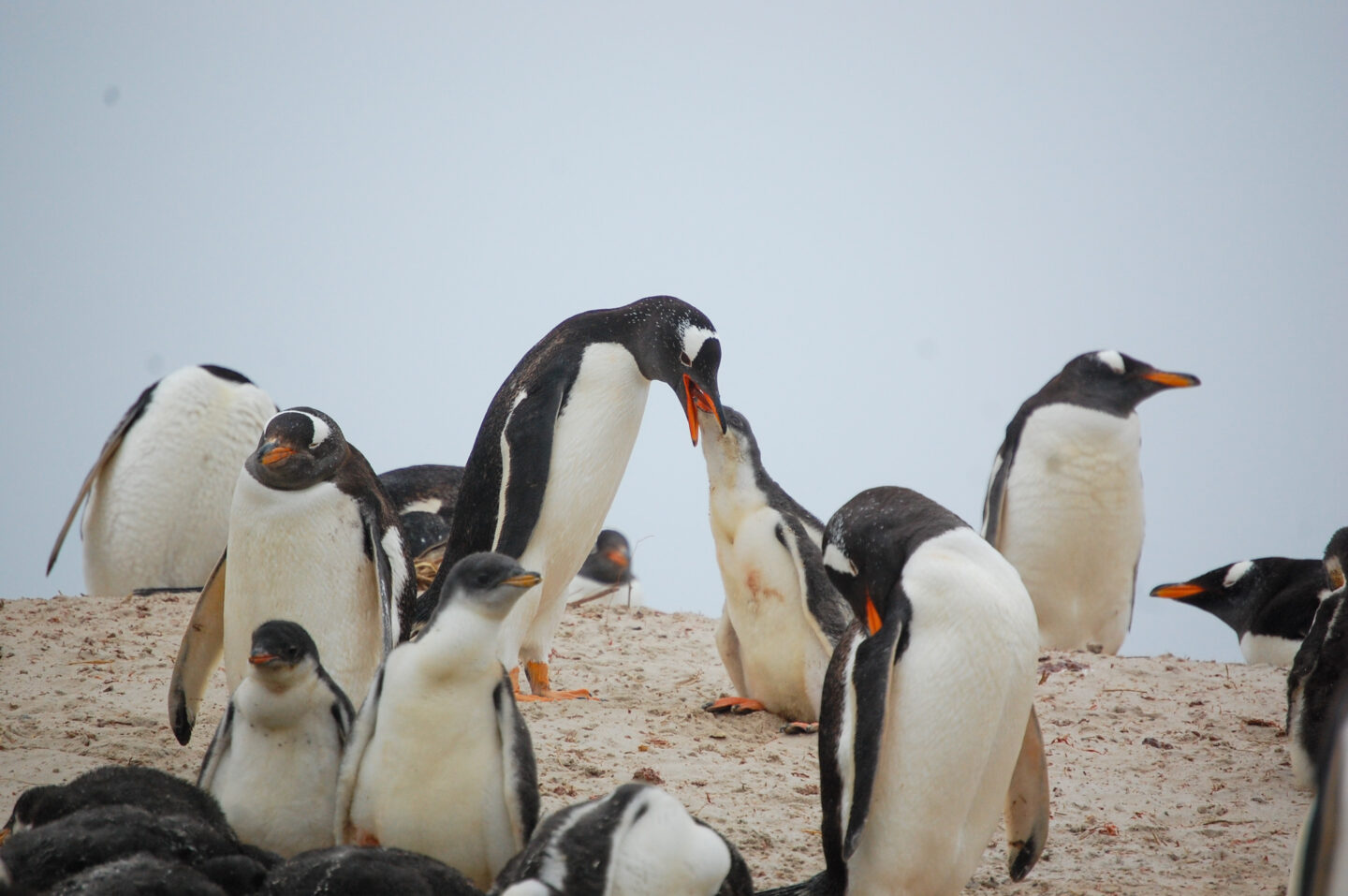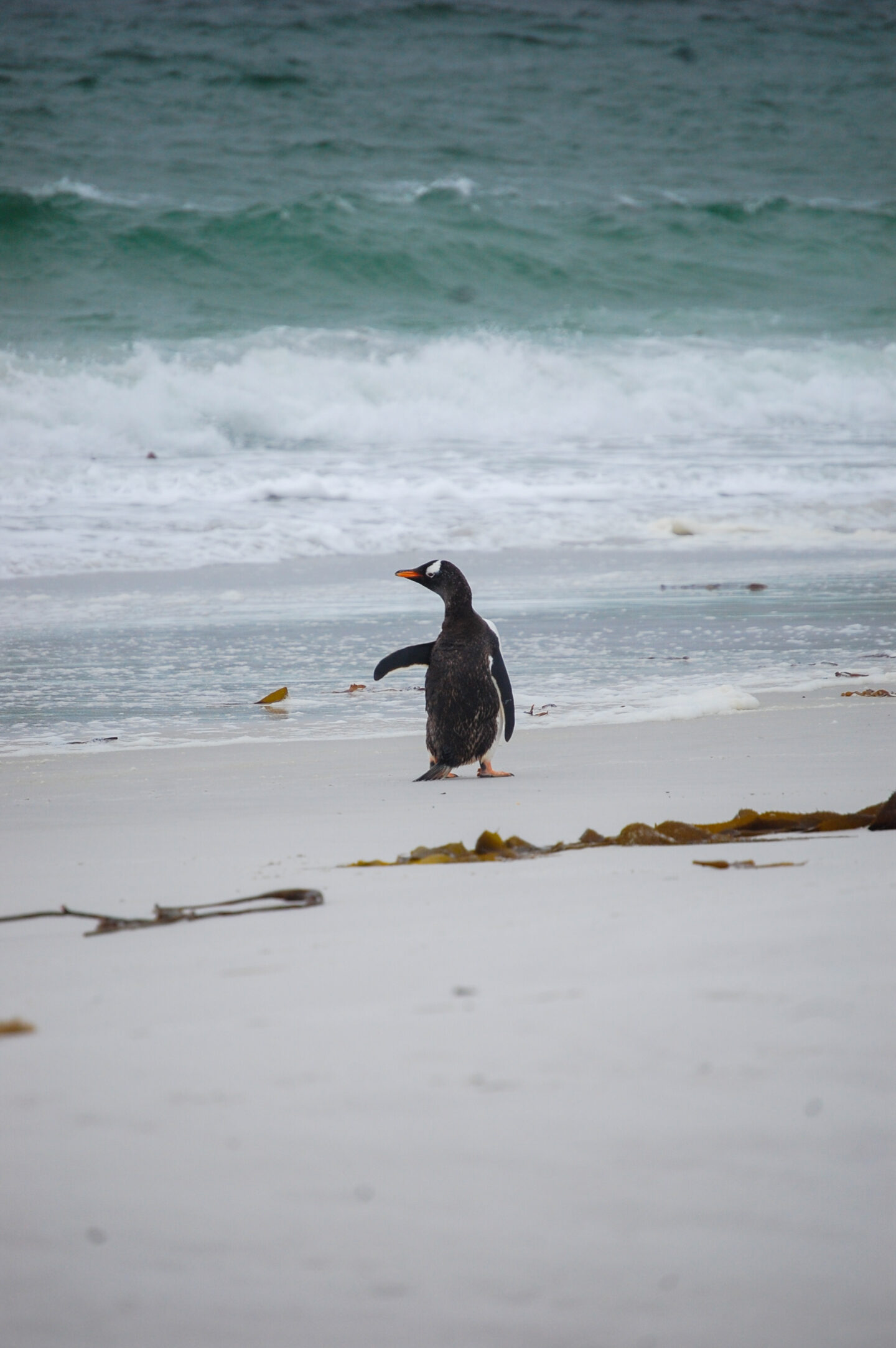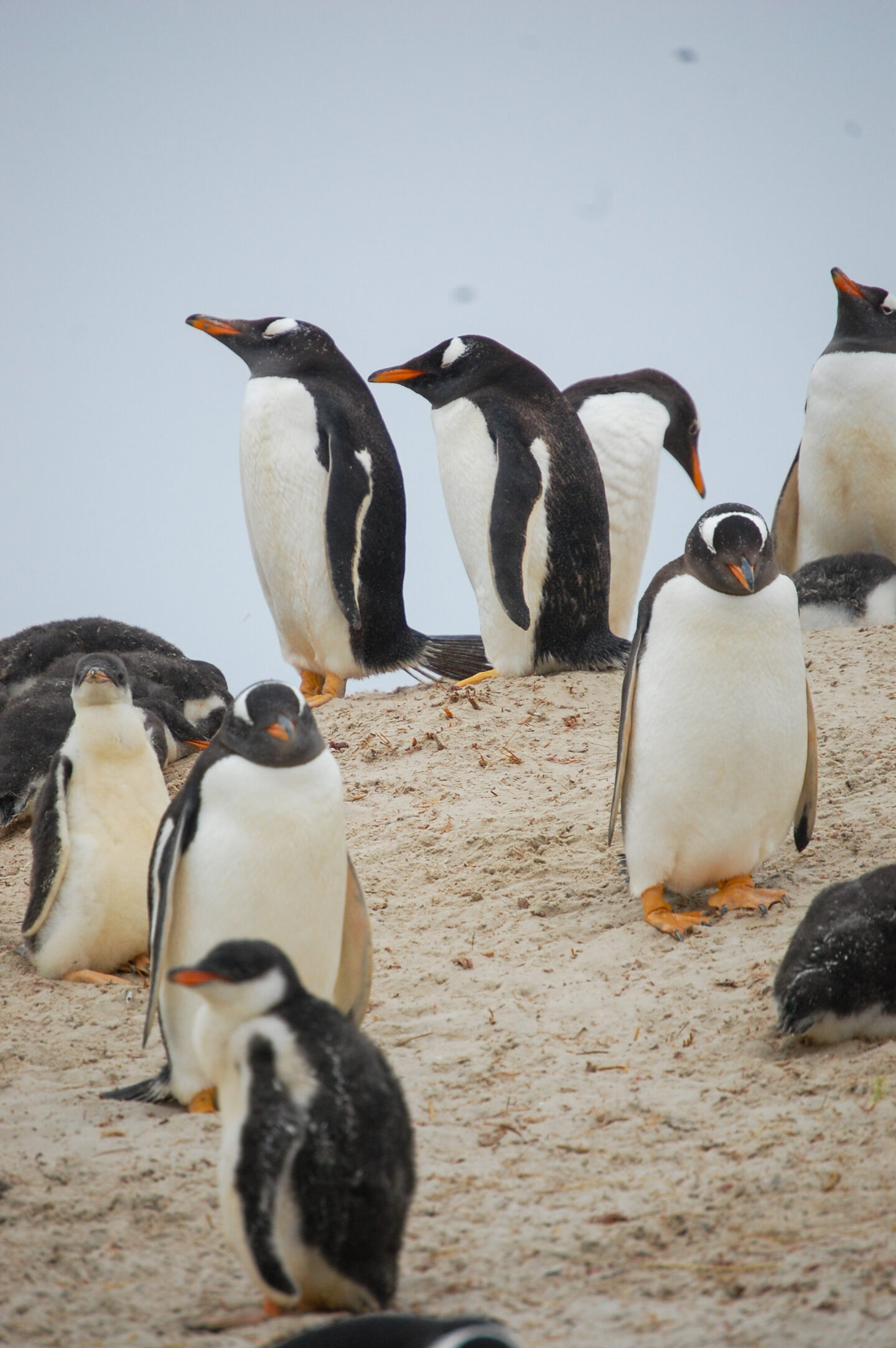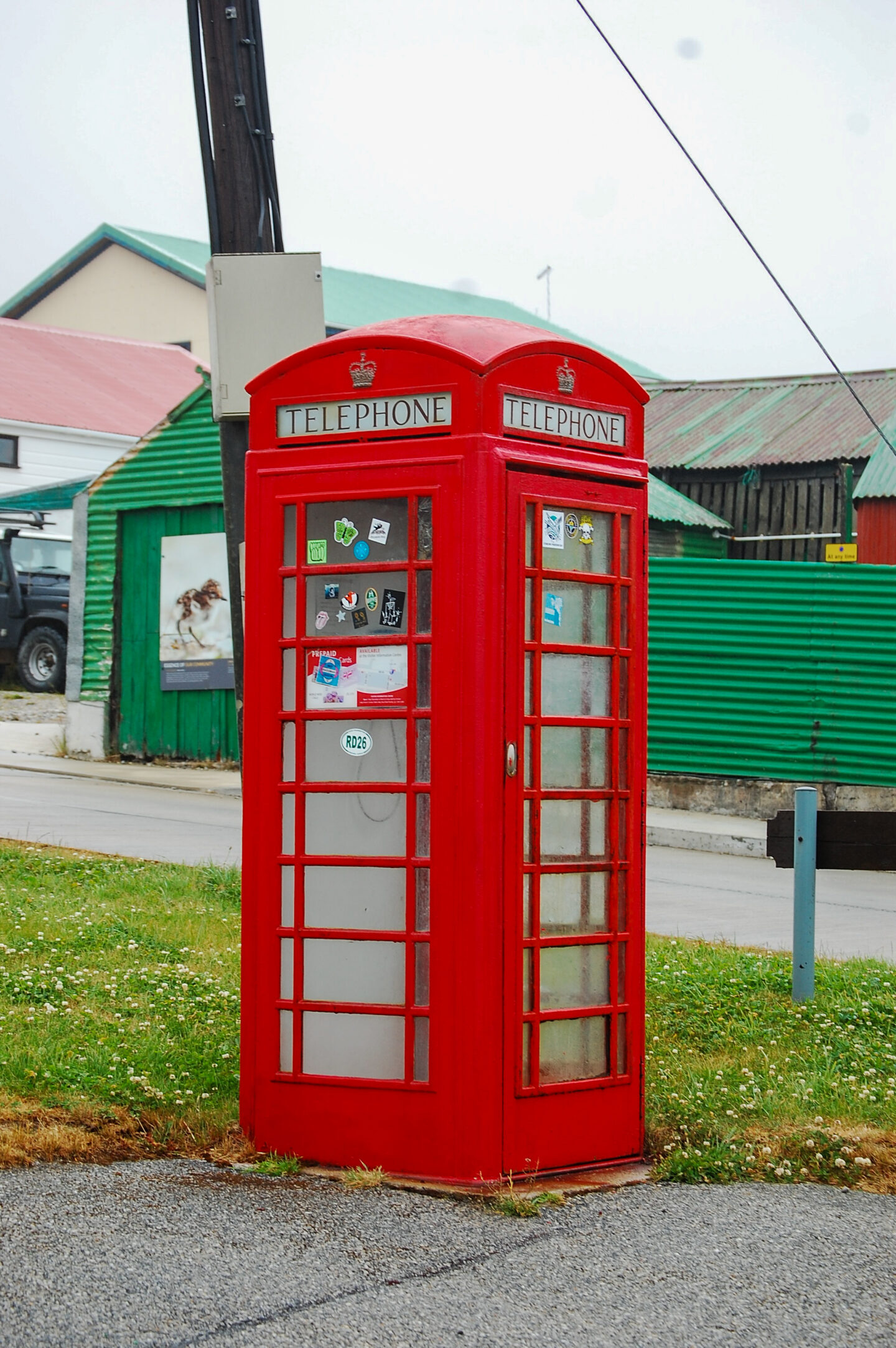
What comes to mind when you think of the Falkland Islands? Have you ever heard of them? Or is it just a collection of islands that brings memories of a war in 1982 between Argentina and the UK? No matter what your previous thoughts about the islands were before, it is probably the case that you only know a handful of people or none at all that have ever been to this remote part of the world. Situated about 300 miles east of Argentina’s Patagonia Coast, it is a British overseas territory that has internal self-governance. Yet, the United Kingdom takes responsibility for their defense and foreign affairs.
The Falkland Islands consist mainly of 2 main islands – East and West Falkland with 776 smaller islands. Due to its remoteness, it is only really serviced by infrequent international flights or cruise port of calls. As we have spent the last 2.5 weeks traversing the Southern Atlantic, we were so excited to get the opportunity to explore a place that would be normally a little difficult to reach independently. We were not really sure what to expect visiting an island owned by a country over 8,000 miles away. We were wondering what the people would sound like as they were indeed British citizens who used both the British pound and their own Falkland Island pound as the local currency. We were given a day to explore the capital city of Stanley and its surrounding areas. Who would’ve thought that we could technically say we’re in the UK all the while being physically in the Southern hemisphere, not too far from our previous destination of Antartica?

First Impressions
As Port Stanley isn’t the busiest port in the world, it isn’t able to accommodate large ships, especially cruise ships docked offshore. Therefore, if you arrive by cruise ship, you should expect to take the cruise ships’ small water taxis to shore. This takes about 25 minutes to go from the ship to set foot on the actual island which was a pain because of how long we had to actually wait for the water taxi. As we pulled in to shore, we saw colorful houses dotting the hills of the city that kind of resembled what you might see in small-town Alaska that experiences harsh winters. You then see a big flag sporting the British Union Jack, reaffirming to us that we are indeed in British territory. Some of the architecture of the immediate houses outside the port resembled rows of homes you might see in a typical British town. It appeared that the capital of Stanley can be more characterized as a town and not so much a city due to its small layout and honestly just lack of people. It was interesting to hear some of the locals speaking, as they definitely looked and sounded like what you would imagine walking around the streets of England. We spoke to some of the workers and most of them came from different countries to work in Stanley for the summer holidays (being in the southern hemisphere, the seasons are opposite of the northern hemisphere). We met workers from Chile, Nepal and another British overseas territory called Mount Helene. There were red, double-decker buses and your typical British phone booths that, once again, resembled another land far, far away.
What to do
From our experience, we don’t really have a ton to recommend for things to do in the Stanley, purely because there aren’t plenty of options. But, here are some things you can find yourself doing when you get to this fascinating island:
Visit Christ Church Cathedral
If you are into visiting places that have titles (I.E.- the “northernmost…” or the “smallest”…), this is a church that actually claims the title as: southernmost Anglican cathedral in the world. So, while it isn’t the biggest or most glamorous church you will have ever seen, it certainly carries so weight of having earned this title! Consecrated in 1892, this church has the feel of many other Anglican churches that you may find in England. It is a pretty church with a backdrop of the port and water that is practically a stone’s throw away!
Adjacent to the cathedral is the Whalebone Arch, constructed in 1933 from the jawbones of two blue whales to commemorate the centenary of continuous British administration in the Falklands. The bones arrived on East Falkland in 1922 from the South Shetland Islands. It is a peculiar statue that allows you to see the magnitude of how big these marine giants really are. It is also a sad reminder of how quickly humans can decimate an animal population as whaling ceased to operate in the 60s. Thankfully, now the focus has shifted to whale conservation in this region.



Hop-On/Hop Off Bus toward Gypsy Cove/Yorke Bay
Nothing against Stanley, but it doesn’t strike me as the most exciting port of call without its nearby main attraction – PENGUINS! There are many ways to see penguins on the Falkland Islands from tours with the cruise ship, independent operators found all over the port, or just going by yourself. We found it a little difficult to get information on how to get to these penguins independently. After scouring conflicting Reddit forums and countless TikToks, it became clearer that no plan was the best plan. So, we recommend finding the big, double decker bus that in the parking lot of the port. There will be a lot of heckling from tour operators, but if you just want to go at your own leisure, the red buses are a great opportunity to do so. You can buy tickets on the bus for $25 or £20 (both currencies are accepted as cash), for which you will receive a wristband to be used as your ticket. You can get on and off all day with this wristband for a bus that says runs every 20 minutes.
The whole loop that hits several points of interest that you can get off takes about 35 minutes. We checking out the Lady Elizabeth Shipwreck as your stop. If you aren’t a diver, it is sometimes hard to come across shipwrecks. Yet, you have the perfect opportunity to do so with this shipwreck as the whole ship rests above the surface. Known as Lady Liz, the ship was launched in Sunderland in the UK in 1879 and suffered damage whilst rounding Cape Horn in 1913. After various moorings in Stanley Harbor, a violent storm in 1936 forced the Lady Liz into her current resting place. It is quite a sight indeed that shouldn’t be missed.
From there, you can walk about 25 minutes along the road to Gypsy Cove- a beautiful beach and an impressive set of powdery, white sand dunes. The beach itself was pretty, but the walk to get there was equally impressive. Gypsy Cove is your first stop toward the penguin rookery found at Yorke Bay. You may find some penguins in Gypsy Cove itself depending on when you arrive, but we unfortunately did not. After spending time in Gypsy Cove, you walk along the beach through some more sand dunes to get to a clearing known as Yorke Bay which is the highlight of your day in Stanley. You see gentoo penguins strolling on the beach and large groups sprawled on the dunes. There are park employees and rope that hinders your advancements on the penguins. Yet, you can get really close for some incredible shots of these beautiful creatures. After having seen penguin colonies in both Ushuaia, Argentina, and Antarctica, this was the most impressive sight with how close you were to them and the backdrop of the white sand and blue waters. Make sure you have enough storage on your phones and camera because you are going to be taking a TON of pics! Once you are finished, you walk about 15 minutes to the bus stop situated next to the island’s tiny airpot and head back to Stanley.
Food/Drink
After seeing some restaurant options (there weren’t many) on TikTok, we headed to Victory Bar for an old-school English pub atmosphere. We just wanted a pint of lager and some fish and chips (can’t really think of much more with British cuisine). Yet, we were turned away as they ran out of fish and chips for the day. The bar looked cool but no fish and chips meant we had to move on. We headed next door to a bar called Groovy’s, which offered fish and chips at a steep £17 (looks like U.S prices but it’s more expensive in pounds, ugh). With no beers on draught and no local beers either, this was very disappointing. Yet, we didn’t have much of a choice. The fish and chips came out and were extremely small, so it’s fair to say it was a ripoff. If you are in Stanley, please DM me to let me know where you ate because our experience wasn’t it!
Overall, our time in Stanley was certainly trippy because it felt we were in a seaside English town….yet, if you look at the map, we were in a remote location at the bottom of the Earth. The town itself didn’t offer a ton but we were glad we went and explored the surrounding nature which was beautiful and who can say no to penguins! I recommend everyone get a chance to explore this little slice of England someday! Just go in the summer months (December, January, February)… Otherwise it might be very dark and unpleasant!
Stay tuned to hear more about our travels as we backpack around the world and spend each month in a different country!